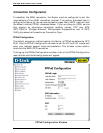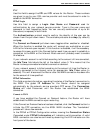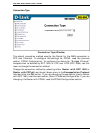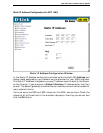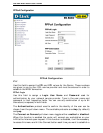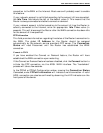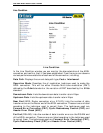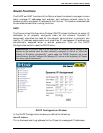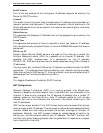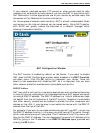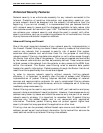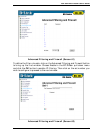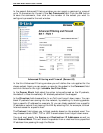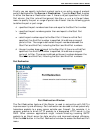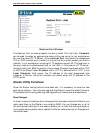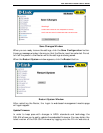
DSL-504 ADSL Router User’s Guide
38
End IP Address
This is the last address of the contiguous IP address range to be used by the
Router for DHCP function.
Netmask
This mask informs the client, how the destination IP address is to be divided into
network, subnet, and host parts. The netmask has ones in the bit positions in the
32-bit address which are to be used for the network and subnet parts, and zeros
for the host part.
Default Gateway
This specifies the Gateway IP Address that will be assigned to and used by the
DHCP clients.
Leased Time
This specifies the amount of time (in seconds) a client can lease an IP address,
from the dynamically allocated IP pool. A value of 4294967295 means the lease is
permanent.
DNS Server IP
Domain Name Service (DNS) servers are used on the Internet to match the
Uniform Resource Locator (URL) for a website to its Internet IP address. For
example, the URL: www.cnn.com, is a pseudonym for the IP address:
207.25.71.25. DNS entries allow users to access resources using URLs instead of
IP addresses.
You may enter any Internet DNS server IP address available through the WAN
connection. This address should be provided by your network service provider.
(Note that without a DNS server IP, internet sites will only be available using IP
addresses and will not be available using URLs.)
State
This toggles Disable and Enable for DHCP function.
NAT Configuration
Network Address Translation (NAT) is a routing protocol that allows your
network to become a private network that is isolated from, yet connected to the
Internet. It does this by changing the IP address of packets from a global IP
address usable on the Internet to a local IP address usable on your private
network (but not on the Internet) and vice-versa. The Router allows up to 128
host IP addresses.
NAT has two major benefits. First, NAT allows many users to access the Internet
using a single global IP address. This can greatly reduce the costs associated with
Internet access and also helps alleviate the current shortage of Internet IP
addresses. Secondly, the NAT process creates an added degree of security by
hiding your private network behind one IP address. The NAT function will
normally only allow incoming packets that are generated in response to a request
from a host within the LAN.



